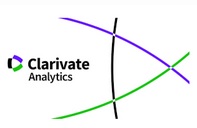Spatial numerical estimation within proprioceptive recalibration
Supporting Agencies
- CNPq-Brazil
Abstract
Research has emphasized that the body's position in space and patterns of visual searching for stimuli are crucial variables to explain the ability to estimate distances numerically. In this paper, we tested the hypothesis that proprioception recalibration interferes in the ability to numerically estimate fixed peri-personal space. The Rubber Hand Illusion (RHI) experimental paradigm was applied as a tool to temporally manipulate the sense of proprioception in participant’s right hand. Seventeen college students were asked to estimate fixed horizontal spatial cues before and after two conditions of tactile stimulation within RHI (synchronous versus asynchronous stroking). Results evidenced that proprioceptive recalibration of the hand were temporally altered by both stroking patterns. However, the effects of numerically estimate fixed horizontal cues towards the body midline were only consistently observed in the synchronous stroking condition. Those findings suggest that numerical estimates of peri-personal fixed cues are strongly associated with proprioceptive recalibration, corroborating the literature on multisensory integration of perception.Downloads
References
Bekrater-Bodmann, R., Foell, J., Diers, M., Kamping, S., Rance, M., Kirsch, P., . . . Flor, H. (2014). The importance of synchrony and temporal order of visual and tactile input for illusory limb ownership experiences – an fMRI study applying virtual reality. PLoS One, 9(1), e87013. doi: 10.1371/journal.pone.0087013
Botvinick, M., & Cohen, J. (1998). Rubber hands ‘feel’ touch that eyes see. Nature, 391(6669), 756. doi :10.1038/35784
Butz, M. V., Kutter, E. F., & Lorenz, C. (2014). Rubber hand illusion affects joint angle perception. PLoS One, 9(3), e92854. doi: 10.1371/journal.pone.0092854
Cardinali, L., Brozzoli, C., & Farnè, A. (2009). Peripersonal space and body schema: Two labels for the same concept? Brain Topography, 21(3-4), 252–260. doi: 10.1007/s10548-009-0092-7
Clayton, H. A., Cressman, E. K., & Henriques, D. Y. (2013). Proprioceptive sensitivity in Ehlers-Danlos syndrome patients. Experimental Brain Research, 230(3), 311–321. doi: 10.1007/s00221-013-3656-4
Constantini, M., & Haggard, P. (2007). The rubber hand illusion: Sensitivity and reference frame for body ownership. Consciousness and Cognition, 16(2), 229–240. doi:10.1016/j.concog.2007.01.001
Dehaene, S. (1992). Varieties of numerical abilities. Cognition, 44(1-2), 1–42. doi: 10.1016/0010-0277(92)90049-N
Dehaene, S., & Cohen, L. (1997). Cerebral pathways for calculation: Double dissociation between rote verbal and quantitative knowledge of arithmetic. Cortex, 33(2), 219–250. doi: 10.1016/S0010-9452(08)70002-9
Dehaene, S., Piazza, M., Pinel, P., & Cohen, L. (2003). Three parietal circuits for number processing. Cognitive Neuropsychology, 20(3), 487–506. doi: 10.1080/02643290244000239
DeHevia, M. D., Vallar, G., & Girelli, L. (2008). Visualizing numbers in the mind's eye: The role of visuo-spatial processes in numerical abilities. Neuroscience and Biobehavioral Review, 32(8), 1361–1372. doi: 10.1016/j.neubiorev.2008.05.015
Dempsey-Jones, H., & Kritikos, A. (2012). Handedness and proprioceptive position estimation: Are left handed people more accurate in self representation and is this representation resistant to manipulation by the rubber hand illusion? Frontiers in Human Neuroscience. Conference Abstract: ACNS-2012 Australasian Cognitive Neuroscience Conference. doi: 10.3389/conf.fnhum.2012.208.00138
Ehrsson, H. H., Spence, C., & Passingham, R. E. (2004). That’s my hand! Activity in premotor cortex reflects feeling of ownership of a limb. Science, 305(5685), 875–877. doi: 10.1126/science.1097011
Ehrsson, H. H., Holmes, N. P., & Passingham, R. E. (2005). Touching a rubber hand: Feeling of body ownership is associated with activity in multisensory brain areas. Journal of Neuroscience, 25(45), 10564–10573. doi: http://dx.doi.org/10.1523/JNEUROSCI.0800-05.2005
Ehrsson, H. H., Rosén, B., Stockselius, A., Ragnö, C., Köhler, P., & Lundborg, G. (2008). Upper limb amputees can be induced to experience a rubber hand as their own. Brain, 131, 3443–3452. doi:10.1093/brain/awn297
Fiorio, M., Weise, D., Önal-Hartmann, C., Zeller, D., Tinazzi, M., & Classen, J. (2011). Impairment of the rubber hand illusion in focal hand dystonia. Brain: A Journal of Neurology, 134(5), 1428–1437. doi:10.1093/brain/awr026
Fiorio, M., Mariotti, C., Panzeri, M., Antonello, E., Classen, J., & Tinazzi, M. (2014). The role of the cerebellum in dynamic changes of the sense of body ownership: A study in patients with cerebellar degeneration. Journal of Cognitive Neuroscience, 26(4), 712–721. doi:10.1162/jocn_a_00522
Holmes, K. J., & Lourenco, S. F. (2012). Orienting numbers in mental space: Horizontal organization trumps vertical. Quarterly Journal of Experimental Psychology, 65(6), 1044–1051. doi: 10.1080/17470218.2012.685079
Jones, S. A. H., Cressman, E. K., & Henriques, D. Y. P. (2010). Proprioceptive localization of the left and right hands. Experimental Brain Research, 204(3), 373–383. doi: 10.1007/s00221-009-2079-8
Kaplan, R. A., Enticott, P. G., Hohwy, J., Castle, D. J., & Rossell, S. L. (2014). Is body dysmorphic disorder associated with abnormal bodily self-awareness? A study using the rubber hand illusion. PLoS ONE, 9(6), e99981. doi:10.1371/journal.pone.0099981
Lewis, E., & Lloyd, D. M. (2010). Embodied experience: A first-person investigation of the rubber hand illusion. Phenomenology and the Cognitive Sciences, 9(3), 317–339. doi: 10.1007/s11097-010-9154-2
Lloyd, D. M., Gillis, V., Lewis, E., Farrell, M. J., & Morrison, I. (2013). Pleasant touch moderates the subjective but not objective aspects of body perception. Frontiers in Behavioral Neuroscience, 7, 207. doi: 10.3389/fnbeh.2013.00207
Mostafa, A. A., Salomonczyk, D., Cressman, E. K., & Henriques, D. Y. (2014). Intermanual transfer and proprioceptive recalibration following training with translated visual feedback of the hand. Experimental Brain Research, 232(6), 1639–1651. doi: 10.1007/s00221-014-3833-0
Reuschel, J., Drewing, K., Henriques, D. Y. P., Rösler, F., & Fiehler, K. (2010). Optimal integration of visual and proprioceptive movement information for the perception of trajectory geometry. Experimental Brain Research, 201(4), 853–862. doi: 10.1007/s00221-009-2099-4
Salomonczyk, D., Cressman, E. K., & Henriques, D. Y. (2011). Proprioceptive recalibration following prolonged training and increasing distortions in visuomotor adaptation. Neuropsychologia, 49(11), 3053–3062. doi: 10.1016/j.neuropsychologia.2011.07.006
Shimada, S., Suzuki, T., Yoda, N., & Hayashi, T. (2014). Relationship between sensitivity to visuotactile temporal discrepancy and the rubber hand illusion. Neuroscience Research, 85, 33–38. doi: 10.1016/j.neures.2014.04.009
Tanaka, H., Worringham, C., & Kerr, G. (2009). Contributions of vision-proprioception interactions to the estimation of time-varying hand and target locations. Experimental Brain Research, 195(3), 371–382. doi: 10.1007/s00221-009-1798-1
Tsakiris, M., & Haggard, P. (2005). The rubber hand illusion revisited: Visuo tactile integration and self-attribution. Journal of Experimental Psychology: Human Perception and Performance, 31(1), 80–91. doi: 10.1037/0096-1523.31.1.80
Tsakiris, M., Schütz-Bosbach, S., & Gallagher, S. (2007). On agency and body ownership: Phenomenological and neurocognitive reflections. Consciousness and Cognition, 16(3), 645–660. doi:10.1016/j.concog.2007.05.012
The works published in this journal are subject to the following terms:
1. The Publications Service of the University of Murcia (the publisher) retains the property rights (copyright) of published works, and encourages and enables the reuse of the same under the license specified in paragraph 2.
© Servicio de Publicaciones, Universidad de Murcia, 2022
2. The works are published in the online edition of the journal under a Creative Commons Reconocimiento-CompartirIgual 4.0 (legal text). You can copy, use, distribute, transmit and publicly display, provided that: i) you cite the author and the original source of publication (journal, editorial and URL of the work), ii) are not used for commercial purposes, iii ) mentions the existence and specifications of this license.
This work is licensed under a Creative Commons Attribution-ShareAlike 4.0 International License.
3. Conditions of self-archiving. Is allowed and encouraged the authors to disseminate electronically pre-print versions (version before being evaluated and sent to the journal) and / or post-print (version reviewed and accepted for publication) of their works before publication, as it encourages its earliest circulation and diffusion and thus a possible increase in its citation and scope between the academic community. RoMEO Color: Green.















